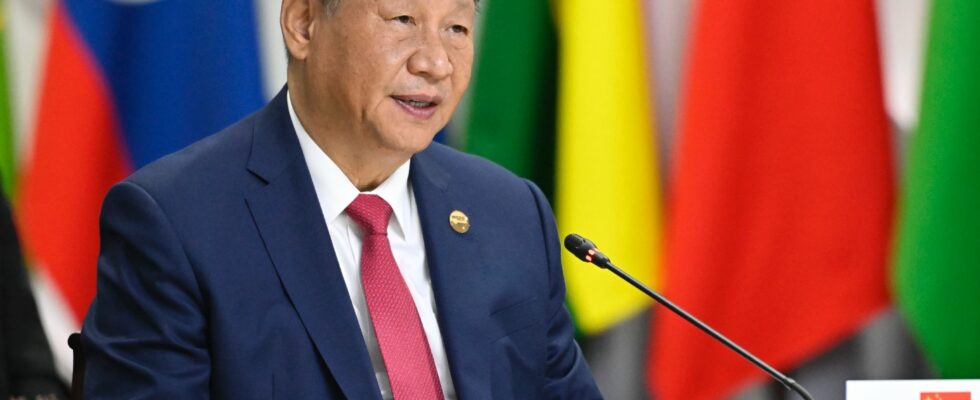The election of Donald Trump undoubtedly arouses some apprehension in China. At the White House, he will neither be the first, nor the only one, to advocate a hard line against the second world power. To face this second Trump mandate, Beijing can however count on its Made in China 2025 plan, of which the country will soon celebrate its tenth anniversary. Presented by Prime Minister Li Keqiang in March 2015, it was broken down into multiple objectives, notably through the Green Paper published by the Chinese Academy of Engineers, then integrated into the 14th five-year plan.
The context in which this plan was conceived is that of a shift in strategic thinking on the part of the United States. The percentage of American respondents having a favorable opinion of China fell to 35% in 2014, compared to 51% in 2011. The following year, Graham Allison published a article founder on Thucydides’ trap in The Atlantic. This is also the time when several developed countries announce their reindustrialization plans, notably the German Industry 4.0 plan of 2013.
Based on the observation of a critical dependence of large sections of the Chinese economy on foreign countries and a lack of endogenous innovation, the Made in China 2025 plan was designed to support the transformation and implementation level of the manufacturing industry in ten priority sectors. It was to lead China to self-sufficiency, with a national share objective of key components and materials of 40% in 2020, and 70% in 2025. China also wanted to encourage the creation of national champions capable of imposing themselves on the international markets. The strategic sectors were clearly identified, including information technology, robotics, aeronautics, new energy vehicles, railway equipment and agricultural machinery.
Chinese comets DJI and BYD
While media attention often focuses on China’s current economic woes, including slowing growth, the plan is progressing well. With the exception of civil aeronautics, China has largely achieved most of the objectives set in all sectors, despite numerous external challenges, notably sanctions and customs tariffs imposed by the United States. Headed by two private companies, DJI, created in 2006 by a student, which accounts for 70% of the global drone market, and BYD, a battery manufacturer whose bet in the car dates back to 2002 with the acquisition of a bankrupt public company, Tsinchuan Automobile, which today represents 22% of the global electric car market. To summarize it in one figure: in 2000, China provided 6% of global manufacturing production; in 2030, this figure will exceed 45% according to the report of the division responsible for industrial development of the United Nations.
The automation was total. Some 1.8 million industrial robots are at work in the country, strengthening the competitiveness of its production lines. They represent 42% of the global stock compared to 13% in 2014. At the same time, investments in research and development reached 2.65% of GDP in 2023 compared to 2.02% in 2014, surpassing the European Union which is stagnating at 2. .27% and approaching the United States at 3.46%.
It is indeed endogenous research and development that has driven the development of the electric vehicle sector, with European and American manufacturers keeping their lead on thermal engines. This move upmarket also erases the notion of overcapacity. Exporting a product with better characteristics than those available on the market is not only due to cost competitiveness and the volume effect. Furthermore, support for industrial activity is not only provided by the central State. Local authorities play a key role. Provincial governments have allocated more than €65 billion in subsidies to support emerging industries since 2015.
The success of the Made in China 2025 plan is proof that a determined industrial policy can produce powerful effects, beyond traditional import substitution strategies. It largely inspired the American response to the IRA (Inflation Reduction Act), the Chips Act and associated customs barriers. Europe continues to ideologically question the relevance of such a plan.
Robin Rivaton is Managing Director of Stonal and member of the Scientific Council of the Foundation for Political Innovation (Fondapol)
.
